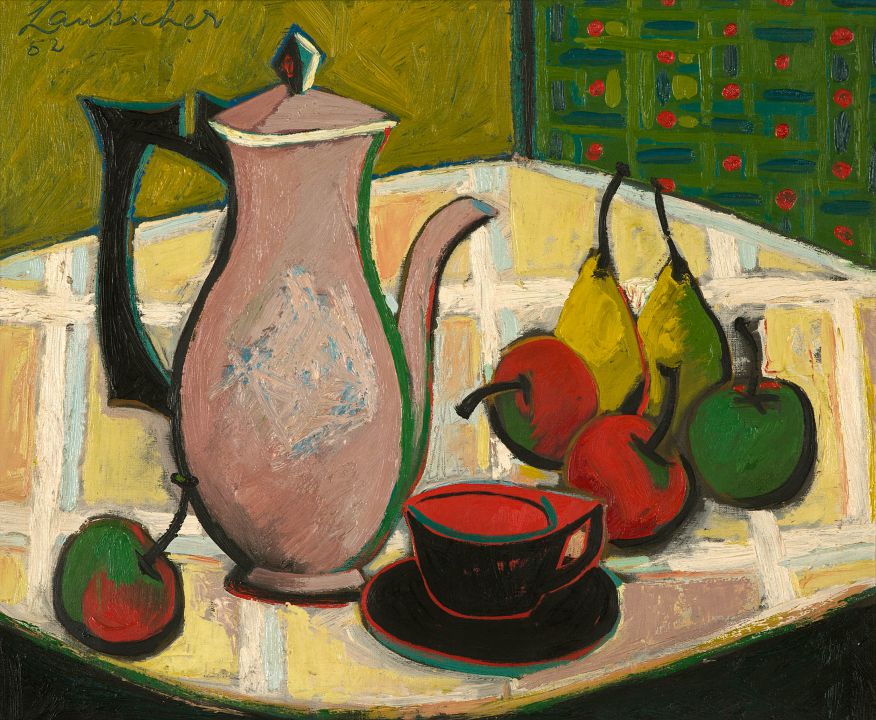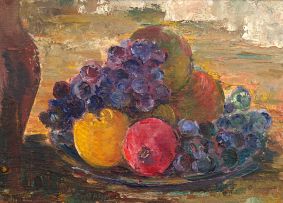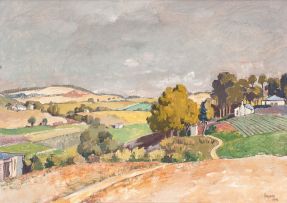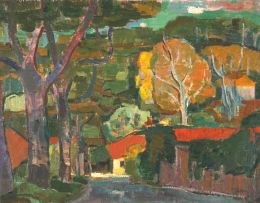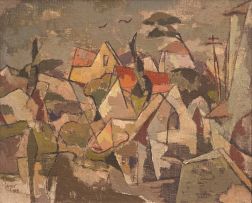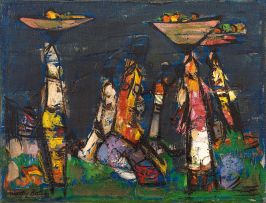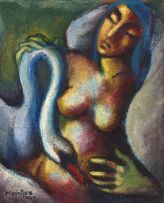Important South African and International Art, Decorative Arts & Jewellery
Live Auction, 5 March 2018
Art: Evening Sale
Incl. Buyer's Premium & VAT
About this Item
signed and dated '52
Notes
Still life compositions incorporating everyday household objects and foodstuffs are a time-honoured subject of the western school of painting. This vivid genre painting by Erik Laubscher shows the influence of especially European modernism on this much-loved Cape painter. In the manner of Vincent van Gogh, Henri Matisse and Georges Braque, who all produced still lifes featuring the same elements, Laubscher uses the conventions of a genre scene to explore as much as declare his personal style. Painted a year after his return to South Africa from Paris, this confidently detailed picture also captures Laubscher at the edge of an important transition.
In 1950 Laubscher travelled to Paris where he studied at the Académie Montmartre. In France the young artist fell under the spell of Bernard Buffet, a fashionable painter linked to the "miserabilist" school of French expressionism (also known as New Realism). Buffett, though, was an unreliable model for Laubscher, a warm-blooded artist who later rejected figuration in favour of various forms of abstraction. This picture evidences Laubscher transition from the sombre tones of his peak School of Paris works towards work marked by his use of warmer colours and tones. The muted, Buffet-type greys and greens have been jettisoned in favour of brilliant red, fleshy pink and varying registers of yellow and green.
Laubscher's flattened picture is dominated by the coffee utensils and ripening fruit (four apples and three pears). Viewed up close, the cup and saucer reveal their origin in a red ground; the architecture of these drinking utensils was created with an overlay of black and grey-green paints. His red apples bear the trace of a thick brush laden with red paint that Laubscher used to paint over his green - a small detail that is nonetheless charged with biographical significance. Noteworthy too is the fact that Laubscher's figurative elements all enjoy equal prominence on the flat surface of the table.
When compared with an earlier work produced in Paris, Still Life with Iron and Fruit (1950, sold by Strauss & Co for sold for R2 046 240 in 2017), it is not only Laubscher's sense of colour that has changed but also his attitude to detailing. Where previously Laubscher rendered elements like tablecloths and walls in undifferentiated blocks of colour, in this picture he engages the eye with abundant decoration. This detailing lends his scene of quietly jostling of objects additional warmth and character.
Laubscher's confident new work was well received by critics when he first exhibited it in Cape Town. Writing in 1952, Walter Battiss remarked: "Cape Town is still the home of Impressionism, but the new and compelling work of Erik Laubscher and Eugene Labuschagne at a recent Art Club exhibition is a challenge to stale ideas in the Cape. Both these young men have studied in Paris and paint big canvases with satisfying assurance."1 Of note, the flattened, graphic style Laubscher favoured in this picture would later provide him with a method for composing his much-admired landscapes, which he tentatively began working on a year after completing this important early work.
1. Walter Battiss. (1952) 'New art and old art in South Africa', The Studio, July 1952. Page 70.
